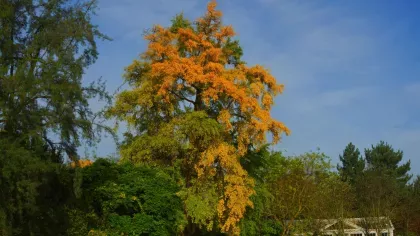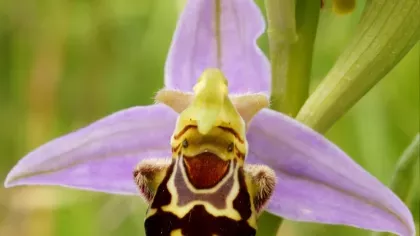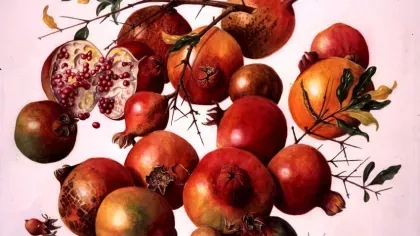7 May 2020
7 amazing facts about Kew’s largest tree
Our oldest chestnut-leaved oak (Quercus castaneifolia) is the biggest and fastest-growing tree in our Gardens.

Within our vast collection of 14,000 trees, made up of more than 2,000 different species, lives an oak tree with a mammoth record.
Meet our majestic chestnut-leaved oak (Quercus castaneifolia).
Giant proportions
It is the largest of all the trees in our Arboretum, measuring almost 37 metres tall and more than 30 metres wide.
But this mighty tree is not only the biggest by volume here at Kew; it is also the fastest-growing tree in our Gardens and the largest of its species in Britain.
The girth of its trunk is a massive 8 metres and the oak’s leaf area is around 3,000 square metres.

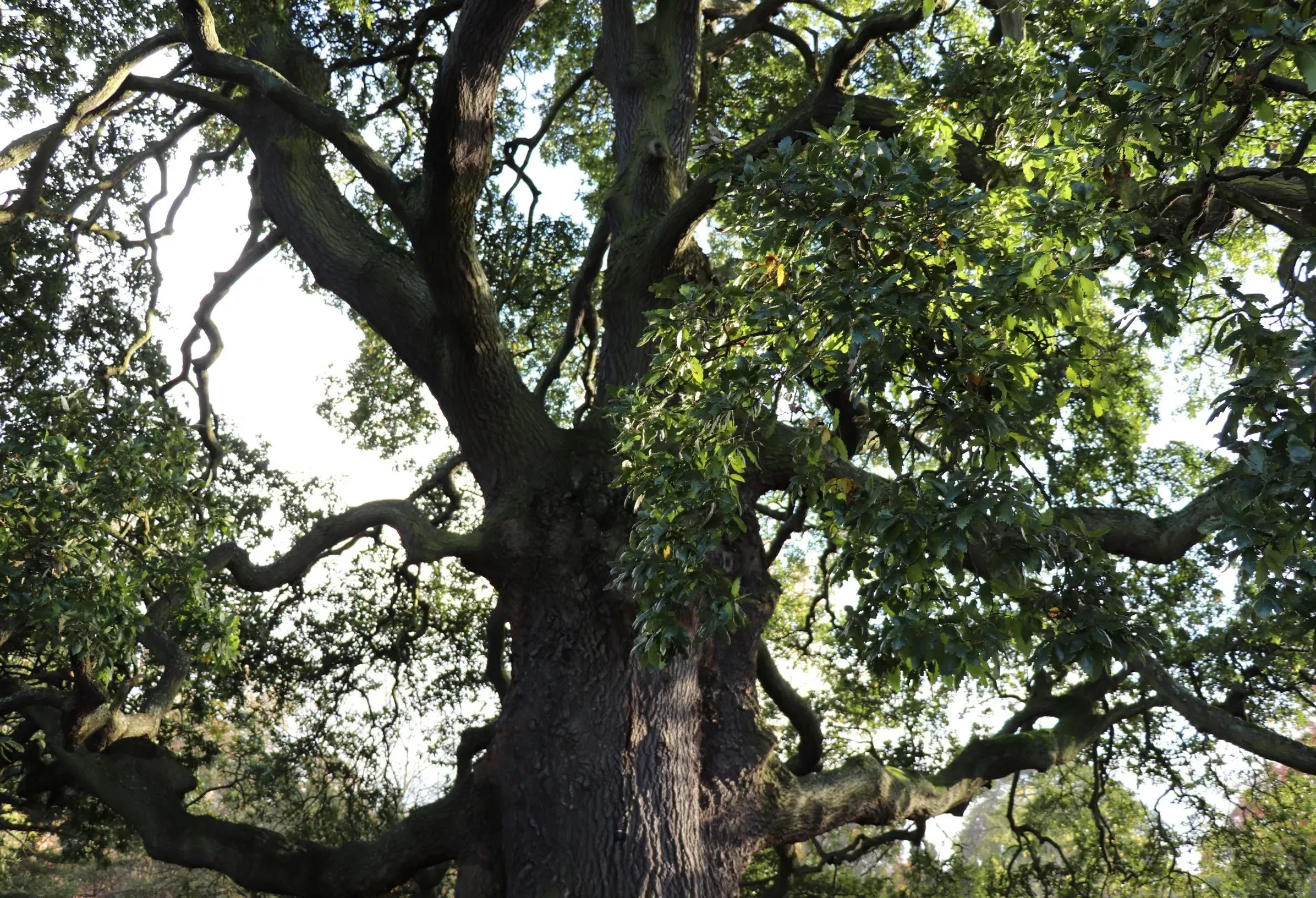
Kew’s old Champion
Located behind our Waterlily House, the tree was planted in the Gardens in 1846 by Kew’s first Director Sir William Hooker.
Quercus castaneifolia is native to the mountain regions of the Caucasus and northern Iran.
It was first introduced to Britain as seed in 1843, from which our giant was grown.
Now approaching 200 years in age, it is the finest specimen of its type in the world and a TROBI (Tree Register of the British Isles) Champion (a register of exceptional examples of tree species, and the largest and tallest trees in Britain and Ireland).
The chestnut-leaved oak is not threatened but is not widely planted in Britain, making our immense specimen rare and valuable in this country.

Fastest-growing tree
Deciduous with dark green leaves that turn bronze in autumn, our acorn-producing oak is also the fastest-growing tree at Kew.
Its trunk grew 3 metres in girth in the space of 60 years.
The growth of younger trees of this type is even speedier, extending by about 30 centimetres every four years.
These oaks also grow horizontal branches from low down on the trunk.
Did you know? Individuals can grow up to 50 metres in height and live for 500 years, and sometimes even 1,000 years.

Not the tallest
Though it’s the biggest tree in our Gardens, it’s not our tallest.
That title is reserved for one of our coastal redwoods (Sequoia sempervirens) in Redwood Grove.
The tree towers at 40 metres tall, the same height as a 13-storey building.
Did you know? Coastal redwoods (Sequoia sempervirens) are the tallest living organism in the world, and giant redwoods (Sequoiadendron giganteum) are the largest living organism by volume.
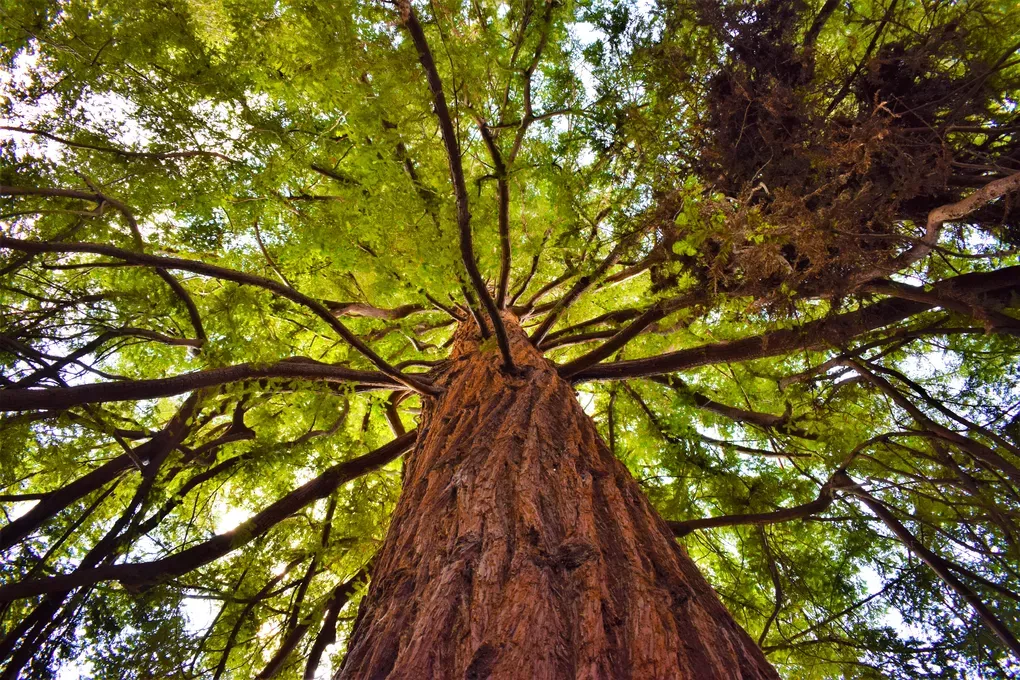
Storm defiant
The Great Storm of 1987 had a terrible impact on our gardens at Kew and Wakehurst.
But, as many trees were sadly damaged or destroyed, our great chestnut-leaved oak stood strong against the storm without losing a single branch.
Health boost
To keep our beloved tree in tip-top condition, our team of arboriculturists, nicknamed the Tree Gang, use their expertise and pioneering technology.
The team give the oak a health boost by reducing soil compaction at the tree's base, which can restrict the roots from valuable air, water and nutrients.
To do this, they use a special tool to inject harmless compressed air into the earth around the roots.
This decompacted soil imitates a tree’s natural woodland environment, with its floor of leaves, decomposed wood, and mycorrhizal fungi.
These fungi have a symbiotic relationship with the tree, improving its ability to absorb water and nutrients for very little in return.
Find out more about how our arboriculturists care for Kew's trees in the video below.
A mixture of trees
You may be wondering why the common name of this plant species mixes two types of tree – the chestnut and oak.
They both, in fact, belong to the beech family (Fagaceae).
As the name hints, the leaves of the chestnut-leaved oak are more similar to those of the sweet chestnut (Castanea sativa) than typical oak leaves.
This giant's leaves are elliptical, resemble the shape of a spearhead and have jagged teeth.
Our chestnut-leaved oak is just one of the many extraordinary trees that live in our Arboretum, which reflects the beauty and diversity of forests around the world, with every tree providing essential knowledge for our botanical and conservation research.

